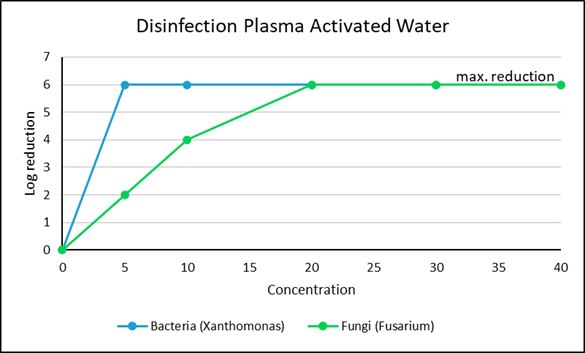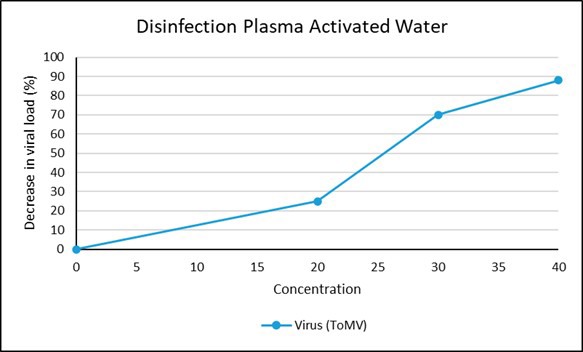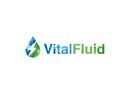Disinfection of drain water and adding natural nitrogen with one machine at the same time. This is what VitalFluid has been developing during the Clean2fix project. Recirculation of water in greenhouse systems is obligatory to achieve a zero emission of water and achieve the goals of the European water framework directive. One of the challenges is that several pathogens, like viruses, fungi, and bacteria, can occur in recirculation water, and therefore, recirculation introduces the risk of spreading pathogens via the irrigation system. Therefore, growers in the horticulture sector often disinfect recirculation water.
 Polo van Ooij & Paul Leenders, VitalFluid
Polo van Ooij & Paul Leenders, VitalFluid
Research project
Within this project, plasma technology is used to disinfect the drain water of a horticulture greenhouse and add natural nitrogen simultaneously. VitalFluid has developed machines that mimic the natural process of lightning. These machines create Plasma Activated Water (PAW) with temporary disinfecting properties and fixated nitrogen.
At Wageningen University & Research, different trials have been executed to investigate the possibility of using PAW to disinfect drain water and to add natural nitrogen at the same time. To test the disinfecting capacity, tests were performed on several model plant pathogens (virus ToMV, fungus Fusarium, and bacterium Xanthomonas). Concurrently, trials were executed to test the influence of the process is on the roots and growth of the plants, fruits, and yield.
Results
Disinfection Properties:

PAW exhibited strong disinfection properties against the fungus Fusarium and the bacterium Xanthomonas. The log 6 reduction indicates a 99.9999% reduction in the number of viable microorganisms, suggesting that PAW is highly effective in killing these pathogens.

Antiviral Effect:
The highest dose of PAW resulted in a 7-fold decrease in the number of infectious virus particles and could be even higher after optimizing the technology. This suggests that PAW has antiviral properties, contributing to the reduction of viral contamination.
No Negative Effects on Plants
Throughout the trials, there were no negative effects on the growth and conditions of roots, plants, or fruits observed.
This is a crucial aspect, as it indicates that PAW, at the tested concentrations, is safe for the overall health and development of the fruits.
Conclusion
The results suggest that PAW is a potent disinfectant against fungi and bacteria, and it also has antiviral properties. Moreover, its application did not adversely affect the growth and health of the plants. These findings may have implications for using PAW as a potential tool for drain water disinfection in agriculture. It's important to consider further research to validate these results and explore the broader applicability of PAW in different contexts.
Involved Researchers: D. van der Krieken, C.M. Voorburg, C.C.M.M. Stijger, S. Breeuwsma, C. Munts, Tommaso Barbagli, Aat van Winkel, Jim van Ruijven, Barbara Eveleens
This project was made possible in part by the European Fund for Regional Development under REACT-EU. Project: 04062 of Opzuid, Europees programma voor transitie gedreven innovatie
For more information:
VitalFluid B.V.
High Tech Campus 25-5
5656 AE, Eindhoven
Tel.: +31 (0)85 0603 025
info@vitalfluid.com
www.vitalfluid.com
